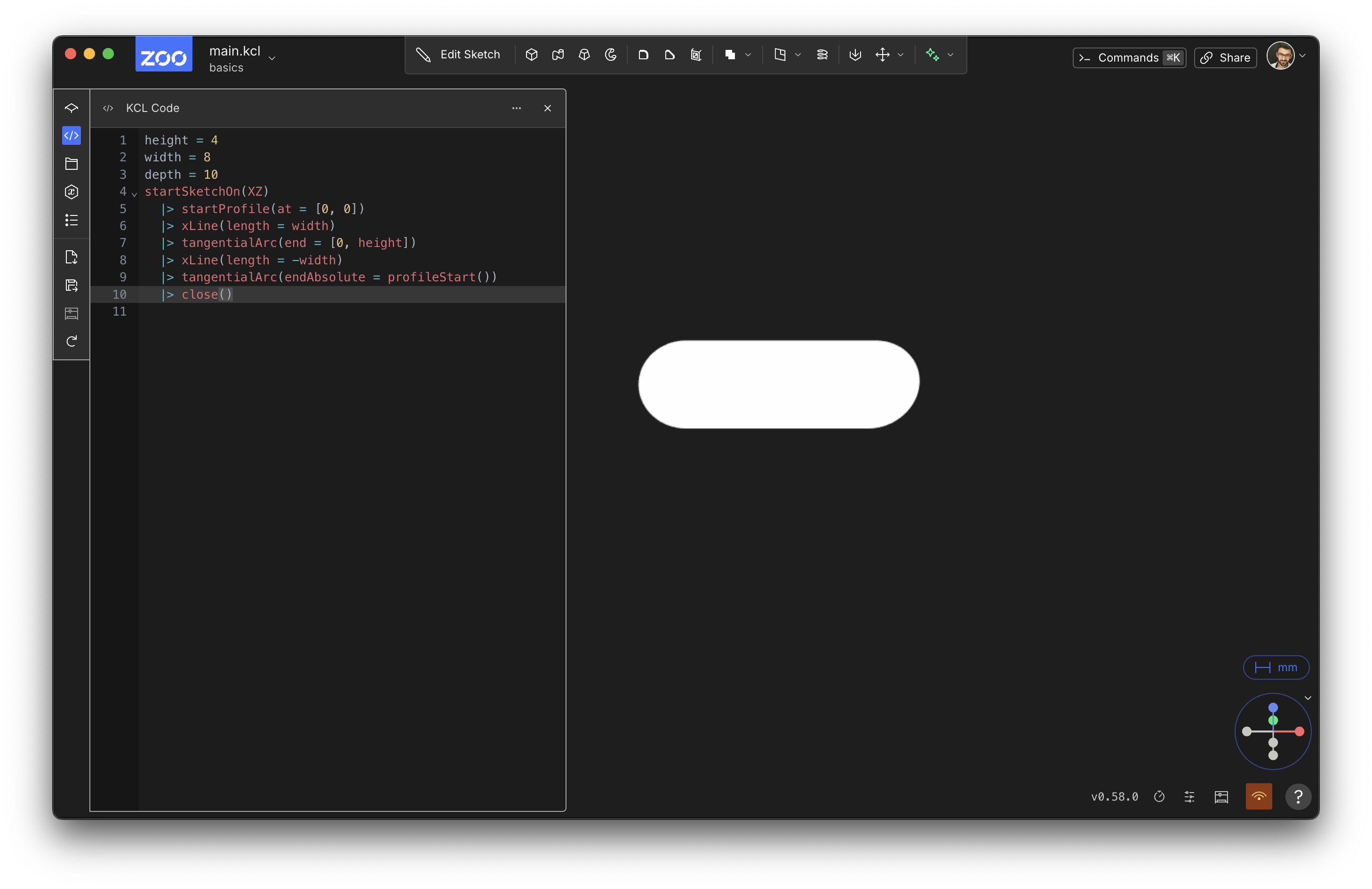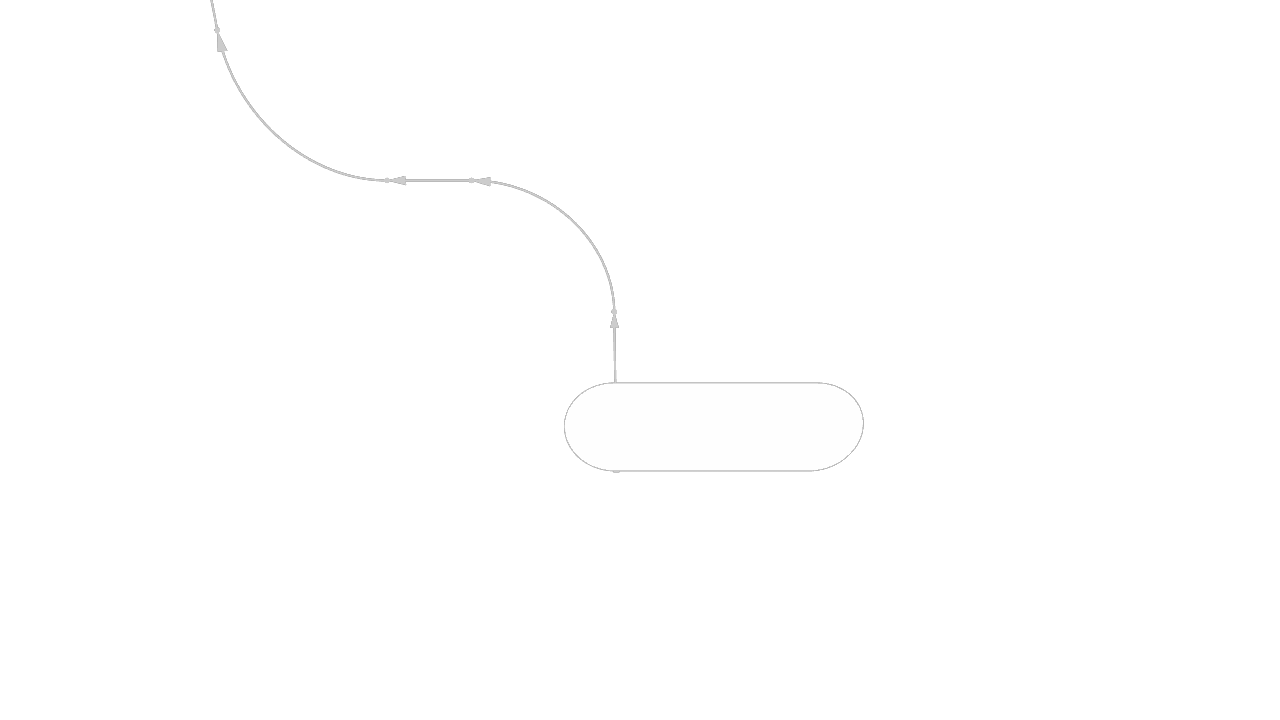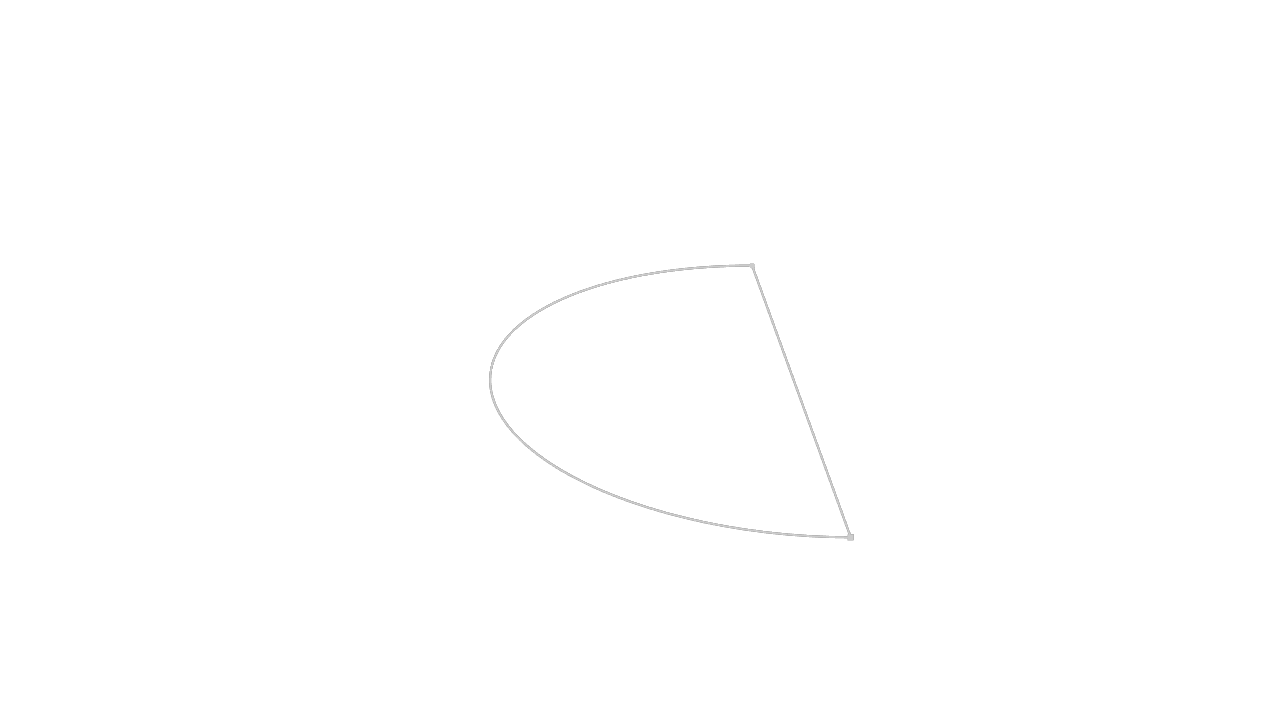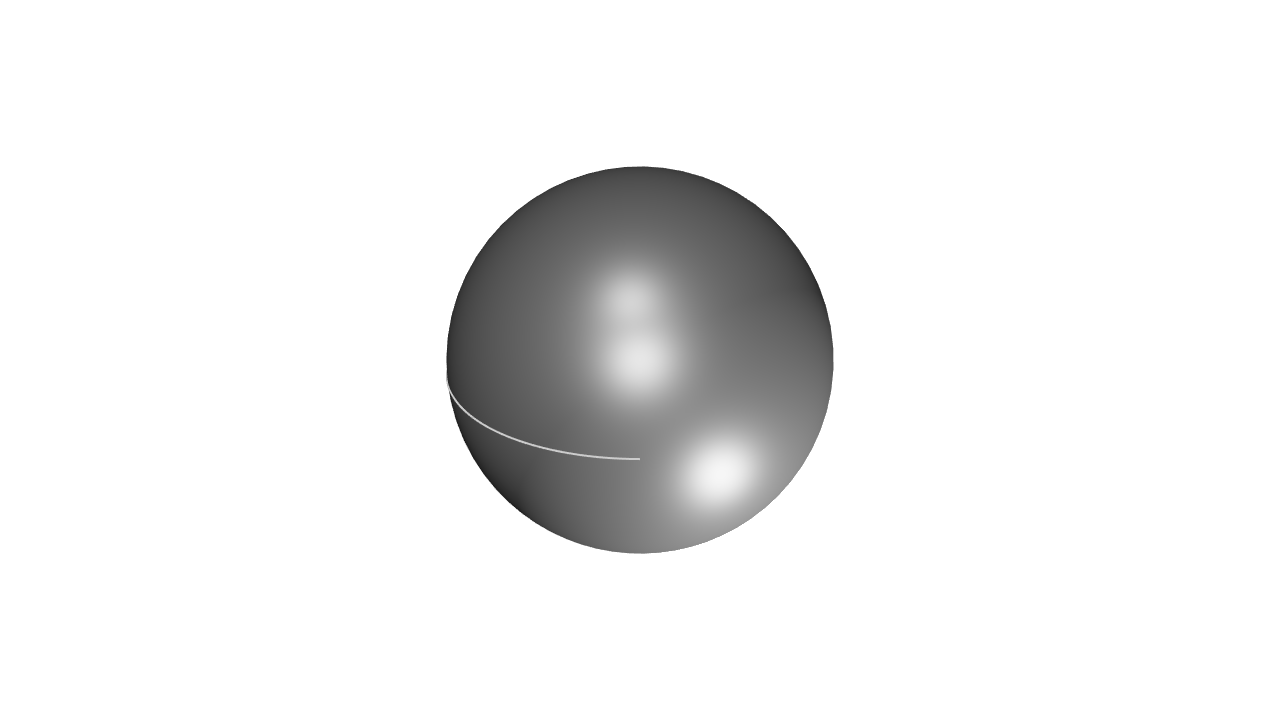Modeling 3D shapes
Previous chapters covered designing 2D shapes. Now it's time to design 3D shapes!
3D shapes are usually made by adding depth to a 2D shape. There are two common ways engineers do this: by extruding or revolving 2D shapes into 3D. There's some less common ways too, including sweeps and lofts. In this chapter, we'll go through each of these! Let's get started with the most common method: extruding.
Extrude
Extruding basically takes a 2D shape and pulls it up, stretching it upwards into the third dimension. Let's start with our existing 2D pill shape from the previous chapter:
height = 4
width = 8
pill = startSketchOn(XZ)
|> startProfile(at = [0, 0])
|> xLine(length = width)
|> tangentialArc(end = [0, height])
|> xLine(length = -width)
|> tangentialArc(endAbsolute = profileStart())
|> close()
It should look like this:

Now we're going to extrude it up into the third axis, making a 3D solid.
height = 4
width = 8
// Add this line!
depth = 10
pill = startSketchOn(XZ)
|> startProfile(at = [0, 0])
|> xLine(length = width)
|> tangentialArc(end = [0, height])
|> xLine(length = -width)
|> tangentialArc(endAbsolute = profileStart())
|> close()
// Add this line!
// This line transforms the 2D sketch into a 3D solid.
|> extrude(length = depth)
You should see something like this:
extrude function takes a distance, which is how far along the third axis to extrude. Every plane has a normal, or an axis which is tangent to the plane. For the plane XZ, this is the Y axis. This normal, or tangent, or axis perpendicular to the plane, is the direction that extrudes go along.
Sweep
An extrude takes some 2D sketch and drags it up in a straight line along the normal axis. A sweep is like an extrude, but the shape isn't just moved along a straight line: it could be moved along any path. Let's reuse our previous pill-shape example, but this time we'll sweep it instead of extruding it. First, we have to define a path that the sweep will take. Let's add one:
height = 4
width = 8
depth = 10
pill = startSketchOn(XZ)
|> startProfile(at = [0, 0])
|> xLine(length = width)
|> tangentialArc(end = [0, height])
|> xLine(length = -width)
|> tangentialArc(endAbsolute = profileStart())
|> close()
// Create a path for the sweep.
sweepPath = startSketchOn(XZ)
|> startProfile(at = [0.05, 0.05])
|> line(end = [0, 7])
|> tangentialArc(angle = 90, radius = 5)
|> line(end = [-3, 0])
|> tangentialArc(angle = -90, radius = 5)
|> line(end = [0, 7])

Now we'll add the sweep call, like swept = sweep(pill, path = sweepPath), which will drag our 2D pill sketch along the path we defined.
height = 4
width = 8
depth = 10
pill = startSketchOn(XZ)
|> startProfile(at = [0, 0])
|> xLine(length = width)
|> tangentialArc(end = [0, height])
|> xLine(length = -width)
|> tangentialArc(endAbsolute = profileStart())
|> close()
// Create a path for the sweep.
sweepPath = startSketchOn(XZ)
|> startProfile(at = [0.05, 0.05])
|> line(end = [0, 7])
|> tangentialArc(angle = 90, radius = 5)
|> line(end = [-3, 0])
|> tangentialArc(angle = -90, radius = 5)
|> line(end = [0, 7])
// Sweep the pill along the path
swept = sweep(pill, path = sweepPath)
sweep call has several other options you can set, so read its docs page for more information.
Revolve
Revolves are the other common way to make a 3D shape. Let's start with a 2D shape, like a basic circle.
startSketchOn(XZ)
|> circle(center = [-200, 0], radius = 100)

The revolve function takes a shape and revolves it, dragging it around an axis. Let's revolve it around the Y axis (which is perpendicular to XZ, the plane we're sketching on), to make a donut shape.
startSketchOn(XZ)
|> circle(center = [-200, 0], radius = 100)
|> revolve(axis = Y)
angle. In the above example, we didn't provide it, so it defaulted to 360 degrees. But we can set it to 240 degrees, and get two thirds of a donut:
startSketchOn(XZ)
|> circle(center = [-200, 0], radius = 100)
|> revolve(axis = Y, angle = 240)
Spheres
You can make a sphere by revolving a semicircle its full 360 degrees. First, let's make a semicircle:
radius = 10
startSketchOn(XZ)
|> startProfile(at = [0, 0])
|> yLine(length = radius * 2)
|> arc(angleStart = 90, angleEnd = 270, radius = radius)

Then we can close() it and add a call to revolve(axis = Y) to revolve it 360 degrees into a sphere:
radius = 10
startSketchOn(XZ)
|> startProfile(at = [0, 0])
|> yLine(length = radius * 2)
|> arc(angleStart = 90, angleEnd = 270, radius = radius)
|> close()
|> revolve(axis = Y)

Note that here, we omitted the angle argument from the revolve call because it defaults to 360 degrees.
Lofts
All previous methods -- extrudes, sweeps, revolves -- took a single 2D shape and made a single 3D solid. Lofts are a little different -- they take multiple 2D shapes and join them to make a single 3D shape. A loft interpolates between various sketches, creating a volume that smoothly blends from one shape into another. Let's see an example:
// Sketch a square on the XY plane
squareSketch = startSketchOn(XY)
|> startProfile(at = [-100, 200])
|> line(end = [200, 0])
|> line(end = [0, -200])
|> line(end = [-200, 0])
|> line(endAbsolute = [profileStartX(%), profileStartY(%)])
|> close()
// Start a second sketch, 200 units above the XY plane.
circleSketch = startSketchOn(offsetPlane(XY, offset = 200))
|> circle(center = [0, 100], radius = 50)
// Loft the square up and into the circle.
loft([squareSketch, circleSketch])
offsetPlane function to start the circle sketch 200 units above the XY plane. We'll cover offsetPlane more in the chapter on sketch on face. The loft function has a few other advanced options you can set. One of these is vDegree, which affects how smoothly KCL interpolates between the shapes. Take a look at these two examples, which are identical except for vDegree. This example uses vDegree = 1:
// Circle, 200 units below the XY plane.
circ0 = startSketchOn(offsetPlane(XY, offset = -200))
|> circle(center = [0, 100], radius = 50)
// Square on the XY plane
squareSketch = startSketchOn(XY)
|> startProfile(at = [-100, 200])
|> line(end = [200, 0])
|> line(end = [0, -200])
|> line(end = [-200, 0])
|> line(endAbsolute = [profileStartX(%), profileStartY(%)])
|> close()
// Second circle, 200 units above the XY plane.
circ1 = startSketchOn(offsetPlane(XY, offset = 200))
|> circle(center = [0, 100], radius = 50)
loftedSolid = loft([circ0, squareSketch, circ1], vDegree = 1)
vDegree = 2. That's actually the default, so we don't need to set it, but for the sake of example we'll explicitly set it there.
// Circle, 200 units below the XY plane.
circ0 = startSketchOn(offsetPlane(XY, offset = -200))
|> circle(center = [0, 100], radius = 50)
// Square on the XY plane
squareSketch = startSketchOn(XY)
|> startProfile(at = [-100, 200])
|> line(end = [200, 0])
|> line(end = [0, -200])
|> line(end = [-200, 0])
|> line(endAbsolute = [profileStartX(%), profileStartY(%)])
|> close()
// Second circle, 200 units above the XY plane.
circ1 = startSketchOn(offsetPlane(XY, offset = 200))
|> circle(center = [0, 100], radius = 50)
loftedSolid = loft([circ0, squareSketch, circ1], vDegree = 2)
vDegree makes a big difference. You can view other options on the loft docs page.